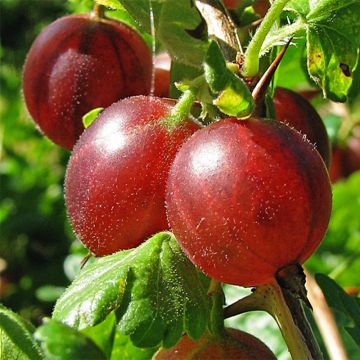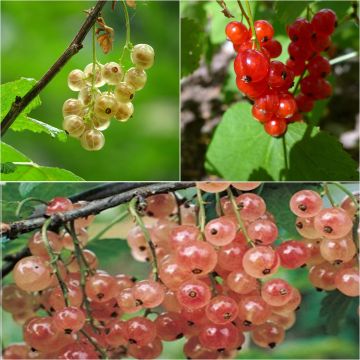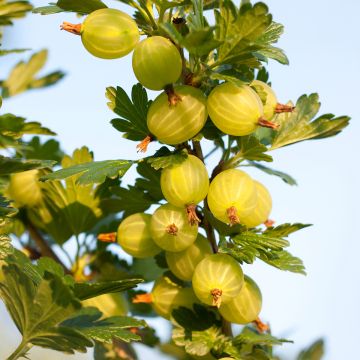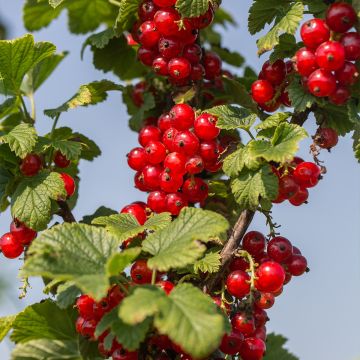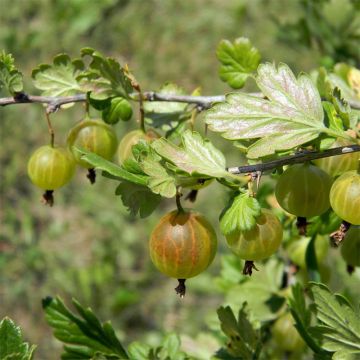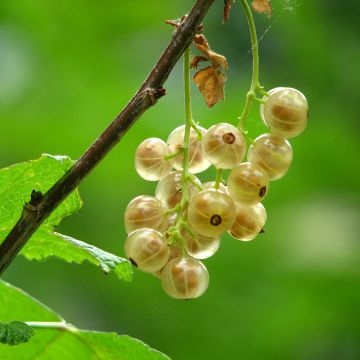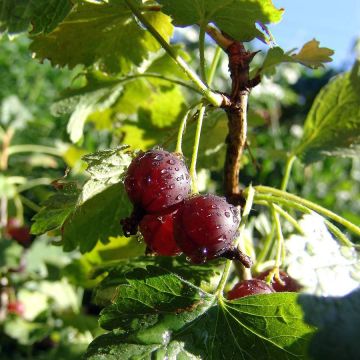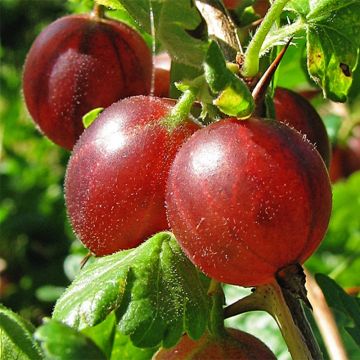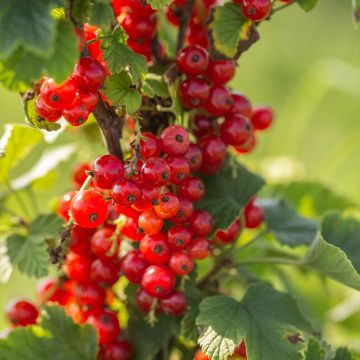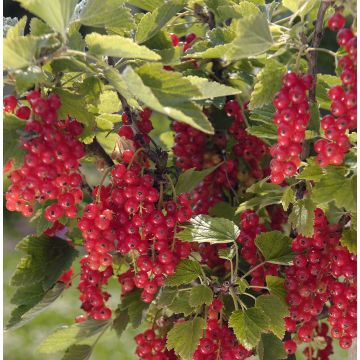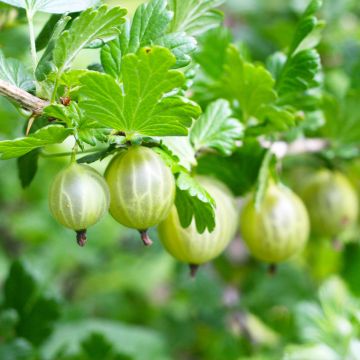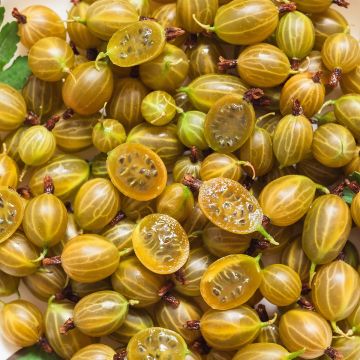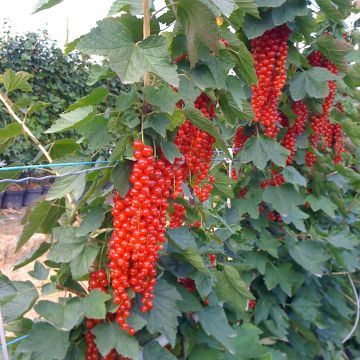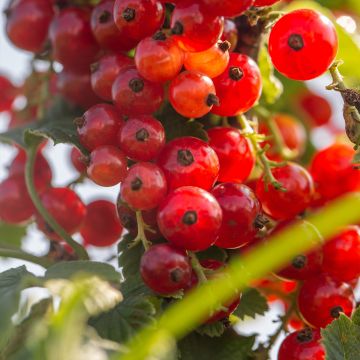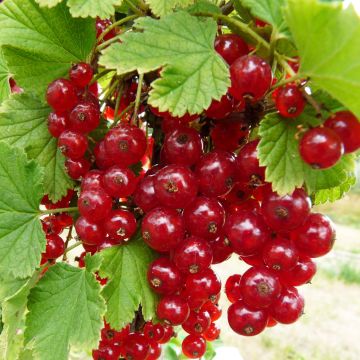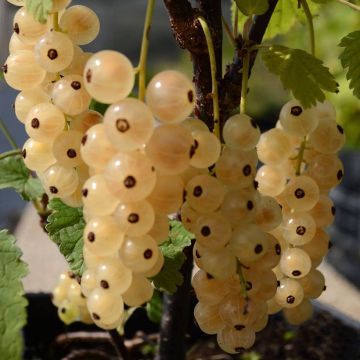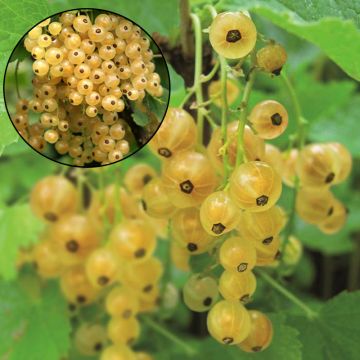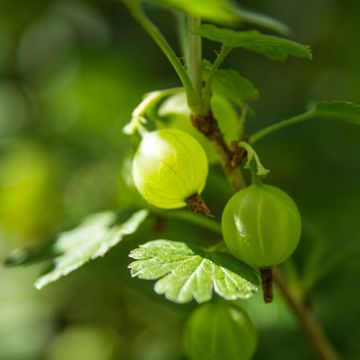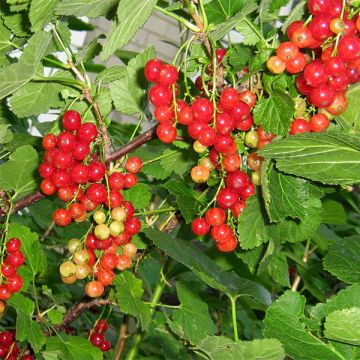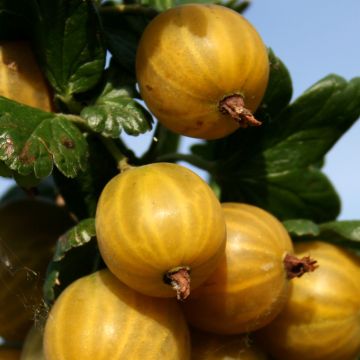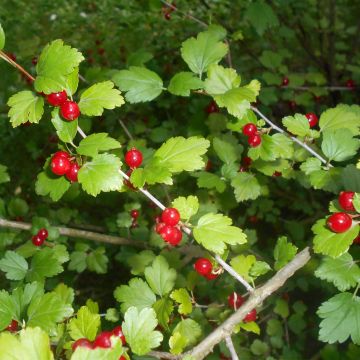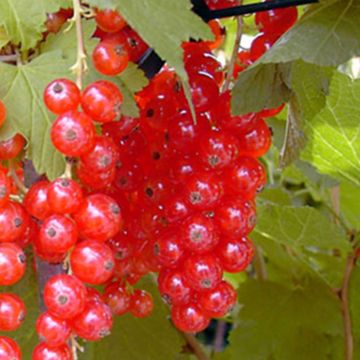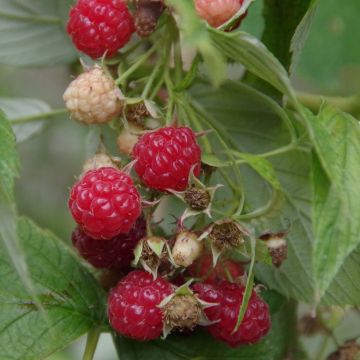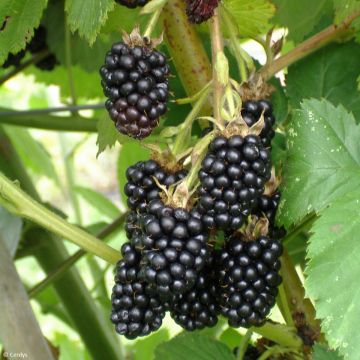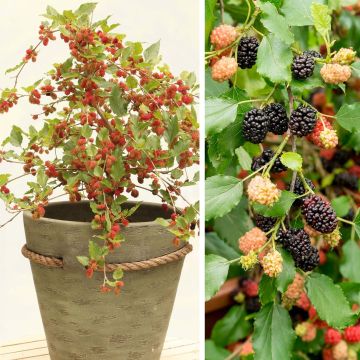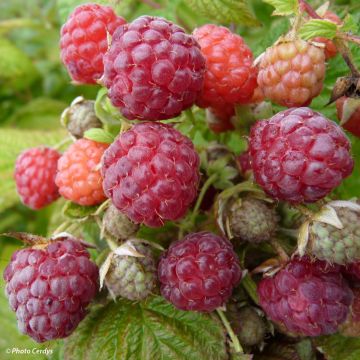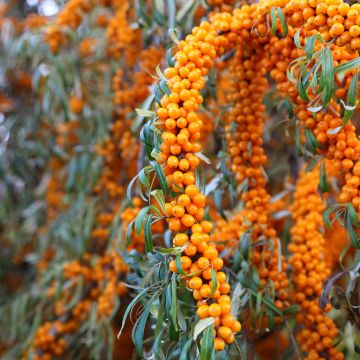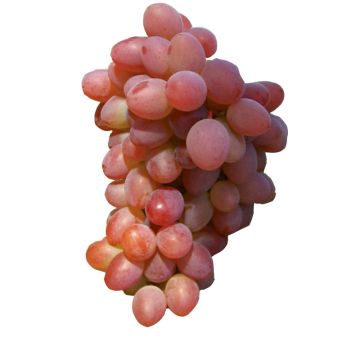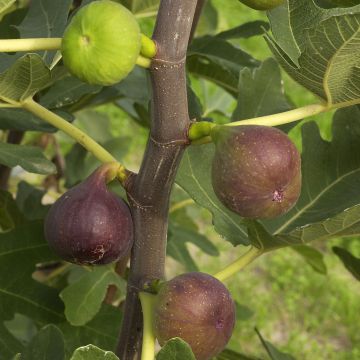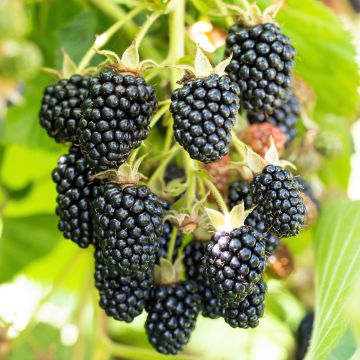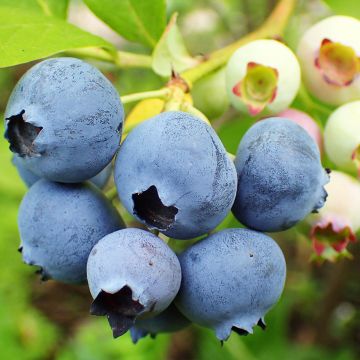Shipping country and language
Your country of residence may be:
Your country of residence is:
For a better user experience on our website, you can select:
Your shipping country:
Andorra
Austria
Belgium
Bulgaria
Canada
Chile
Croatia
Cyprus
Czechia
Denmark
Estonia
Finland
France
Germany
Greece
Hungary
Iceland
Ireland
Italy
Latvia
Lithuania
Luxembourg
Malta
Monaco
Netherlands
Poland
Portugal
Romania
Slovakia
Slovenia
Spain
Sweden
Switzerland
United Kingdom
We only deliver seed and bulb products to your country. If you add other products to your basket, they cannot be shipped.
Language:
French
German
Spanish
English
My Account
Hello
My wish lists
Plantfit
Log in / Register
Existing customer?
New customer?
Create an account to track your orders, access our customer service and, if you wish, make the most of our upcoming offers.


White Currant Cerise Blanche - Georges Delbard
Ribes rubrum Cerise Blanche
White Currant, Garden Currant
Why not try an alternative variety in stock?
View all →Order in the next for dispatch today!
Dispatch by letter from €3.90.
Delivery charge from €5.90 Oversize package delivery charge from €6.90.
More information
This item is not available in your country.
Schedule delivery date,
and select date in basket
This plant carries a 6 months recovery warranty
More information
We guarantee the quality of our plants for a full growing cycle, and will replace at our expense any plant that fails to recover under normal climatic and planting conditions.
From €5.90 for pickup delivery and €6.90 for home delivery
Express home delivery from €8.90.
Description
Ribes rubrum 'White Cherry' is a late variety of clustered whitecurrant bush that has the particularity of producing long clusters of white berries, slightly golden and giving fruits with a tangy and fragrant flavour. This self-fertile and moderately vigorous variety is highly productive and resistant to diseases. Easy to grow in non-burning sun, in well-drained soil, even poor soil, requiring trellising. Planting from October to March for a late July harvest.
The clustered whitecurrant, also known as Ribes rubrum, belongs to the Grossulariaceae family, like the gooseberry. It is a plant that has been cultivated for a long time and grows spontaneously in many temperate regions of the Northern Hemisphere, from Europe to Siberia, to Manchuria. The whitecurrant is a bushy, non-thorny shrub with a clump-like habit of slightly stiff, sparsely branched stems, with soft wood and abundant pith. This very hardy bush will reach 1.50m (5ft) in all directions. The foliage is deciduous, composed of palmate, lobed and aromatic leaves, medium green in colour.
Flowering occurs in spring, in the form of clusters of small, inconspicuous greenish to brownish flowers, intensely visited by bees. Fruiting mainly occurs on one- and two-year-old branches. The bush is then covered with numerous clusters of small, round and translucent berries, containing small seeds. Harvesting takes place as the fruits ripen. The 'White Cherry' variety produces long clusters of white fruits, to be picked from late July. The currants have a white, tangy and fragrant flesh. Whether white or red, currants are low in calories, rich in minerals and trace elements, as well as potassium, calcium and phosphorus. They are also a good source of vitamin C and fibre.
Use fresh currants in jelly or pastries for tart fillings or sorbet making. In the garden, this bush, unassuming for much of the year, takes on its full charm when it is laden with its long clusters that play with the summer light. The pleasure is threefold, both visual and gustatory, but also olfactory when its warm foliage fills the garden with its scent. It pairs well with red currant varieties, gooseberries, as well as shrubs that offer beautiful fruiting (inedible), such as Leycesteria formosa, beautyberries, Nandina domestica and its varieties, Japanese quinces, small-leaved cotoneaster, St. John's wort Magical Beauty, symphorines... For small gardens or to save space, it is clever to train this clustered redcurrant against a wall or grow it as a standard. Note that the redcurrant can also be grown in a terrace orchard, as it performs well in large pots, with a depth of at least forty centimetres, while avoiding watering it with excessively hard water.
White Currant Cerise Blanche - Georges Delbard in pictures
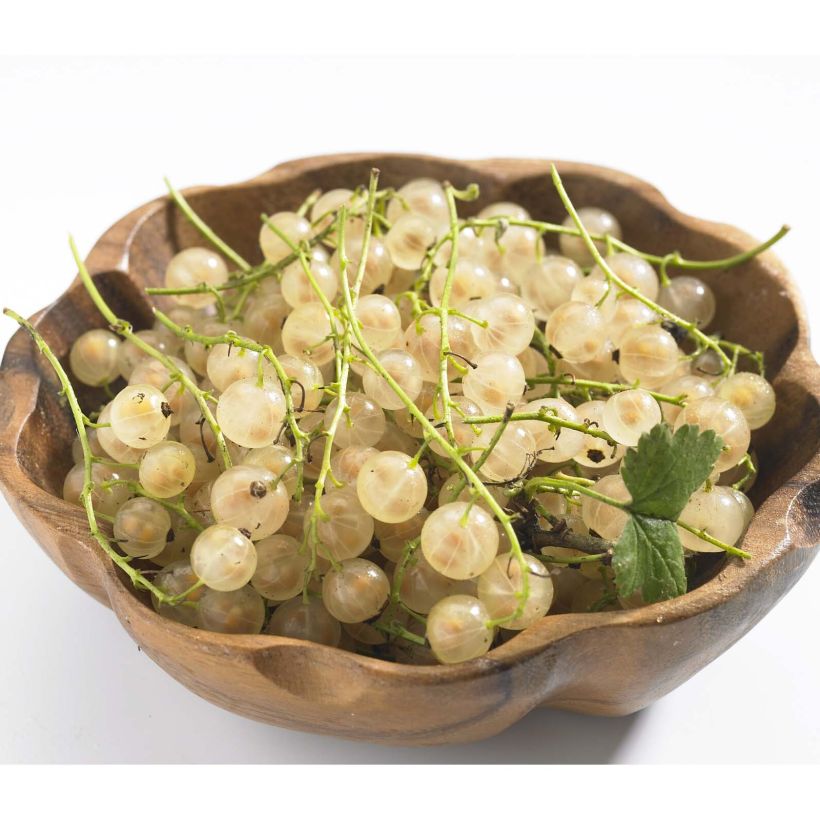

Plant habit
Fruit
Flowering
Foliage
Botanical data
Ribes
rubrum
Cerise Blanche
Grossulariaceae
White Currant, Garden Currant
Cultivar or hybrid
Other Redcurrant bush
Planting and care
Plant the whitecurrant bush from October to March. It thrives in ordinary soils, even poor ones, without too much limestone. The whitecurrant bush prefers well-drained soil, fresh but not constantly wet. As the Redcurrant bush is sensitive to heat and drought, plant it in full sun in the regions north of the Loire or in partial shade in the south. Choose a location sheltered from strong winds.
When planting, space the young plants 1.20m (4ft) apart in all directions. For bare-root plants, soak the roots in pralin for a day to prevent air pockets from forming between the roots and the soil. You can either prepare the pralin by mixing 1/3 very fine soil or compost, 1/3 cow dung or compost, and 1/3 rainwater, or buy it commercially. Dig a hole, incorporate decomposed manure or mature compost into the soil, place the plant, and cover with soil. Water generously. Then mulch the soil to keep it cool in summer.
An application of organic fertilizer at the start of vegetation will support fruit production and plant health. It is a tolerant bush, not very susceptible to diseases. It has a few enemies, such as aphids, which can be eliminated by spraying with soapy water or a garlic decoction. In case of powdery mildew attack, spray with Bordeaux mixture. In July, protect the harvest with nets to deter birds from feasting. To get rid of raspberry worms, which can also be present on redcurrants, you can sow forget-me-nots along the plantation; they have a reputation for repelling them.
In a redcurrant plantation, as in any plantation, it is important to alternate varieties and species, when space allows: pollination will be encouraged, and the spread of epidemics or diseases will be limited.
Planting period
Intended location
Care
This item has not been reviewed yet - be the first to leave a review about it.
Berries
Haven't found what you were looking for?
Hardiness is the lowest winter temperature a plant can endure without suffering serious damage or even dying. However, hardiness is affected by location (a sheltered area, such as a patio), protection (winter cover) and soil type (hardiness is improved by well-drained soil).

Photo Sharing Terms & Conditions
In order to encourage gardeners to interact and share their experiences, Promesse de fleurs offers various media enabling content to be uploaded onto its Site - in particular via the ‘Photo sharing’ module.
The User agrees to refrain from:
- Posting any content that is illegal, prejudicial, insulting, racist, inciteful to hatred, revisionist, contrary to public decency, that infringes on privacy or on the privacy rights of third parties, in particular the publicity rights of persons and goods, intellectual property rights, or the right to privacy.
- Submitting content on behalf of a third party;
- Impersonate the identity of a third party and/or publish any personal information about a third party;
In general, the User undertakes to refrain from any unethical behaviour.
All Content (in particular text, comments, files, images, photos, videos, creative works, etc.), which may be subject to property or intellectual property rights, image or other private rights, shall remain the property of the User, subject to the limited rights granted by the terms of the licence granted by Promesse de fleurs as stated below. Users are at liberty to publish or not to publish such Content on the Site, notably via the ‘Photo Sharing’ facility, and accept that this Content shall be made public and freely accessible, notably on the Internet.
Users further acknowledge, undertake to have ,and guarantee that they hold all necessary rights and permissions to publish such material on the Site, in particular with regard to the legislation in force pertaining to any privacy, property, intellectual property, image, or contractual rights, or rights of any other nature. By publishing such Content on the Site, Users acknowledge accepting full liability as publishers of the Content within the meaning of the law, and grant Promesse de fleurs, free of charge, an inclusive, worldwide licence for the said Content for the entire duration of its publication, including all reproduction, representation, up/downloading, displaying, performing, transmission, and storage rights.
Users also grant permission for their name to be linked to the Content and accept that this link may not always be made available.
By engaging in posting material, Users consent to their Content becoming automatically accessible on the Internet, in particular on other sites and/or blogs and/or web pages of the Promesse de fleurs site, including in particular social pages and the Promesse de fleurs catalogue.
Users may secure the removal of entrusted content free of charge by issuing a simple request via our contact form.
The flowering period indicated on our website applies to countries and regions located in USDA zone 8 (France, the United Kingdom, Ireland, the Netherlands, etc.)
It will vary according to where you live:
- In zones 9 to 10 (Italy, Spain, Greece, etc.), flowering will occur about 2 to 4 weeks earlier.
- In zones 6 to 7 (Germany, Poland, Slovenia, and lower mountainous regions), flowering will be delayed by 2 to 3 weeks.
- In zone 5 (Central Europe, Scandinavia), blooming will be delayed by 3 to 5 weeks.
In temperate climates, pruning of spring-flowering shrubs (forsythia, spireas, etc.) should be done just after flowering.
Pruning of summer-flowering shrubs (Indian Lilac, Perovskia, etc.) can be done in winter or spring.
In cold regions as well as with frost-sensitive plants, avoid pruning too early when severe frosts may still occur.
The planting period indicated on our website applies to countries and regions located in USDA zone 8 (France, United Kingdom, Ireland, Netherlands).
It will vary according to where you live:
- In Mediterranean zones (Marseille, Madrid, Milan, etc.), autumn and winter are the best planting periods.
- In continental zones (Strasbourg, Munich, Vienna, etc.), delay planting by 2 to 3 weeks in spring and bring it forward by 2 to 4 weeks in autumn.
- In mountainous regions (the Alps, Pyrenees, Carpathians, etc.), it is best to plant in late spring (May-June) or late summer (August-September).
The harvesting period indicated on our website applies to countries and regions in USDA zone 8 (France, England, Ireland, the Netherlands).
In colder areas (Scandinavia, Poland, Austria...) fruit and vegetable harvests are likely to be delayed by 3-4 weeks.
In warmer areas (Italy, Spain, Greece, etc.), harvesting will probably take place earlier, depending on weather conditions.
The sowing periods indicated on our website apply to countries and regions within USDA Zone 8 (France, UK, Ireland, Netherlands).
In colder areas (Scandinavia, Poland, Austria...), delay any outdoor sowing by 3-4 weeks, or sow under glass.
In warmer climes (Italy, Spain, Greece, etc.), bring outdoor sowing forward by a few weeks.
